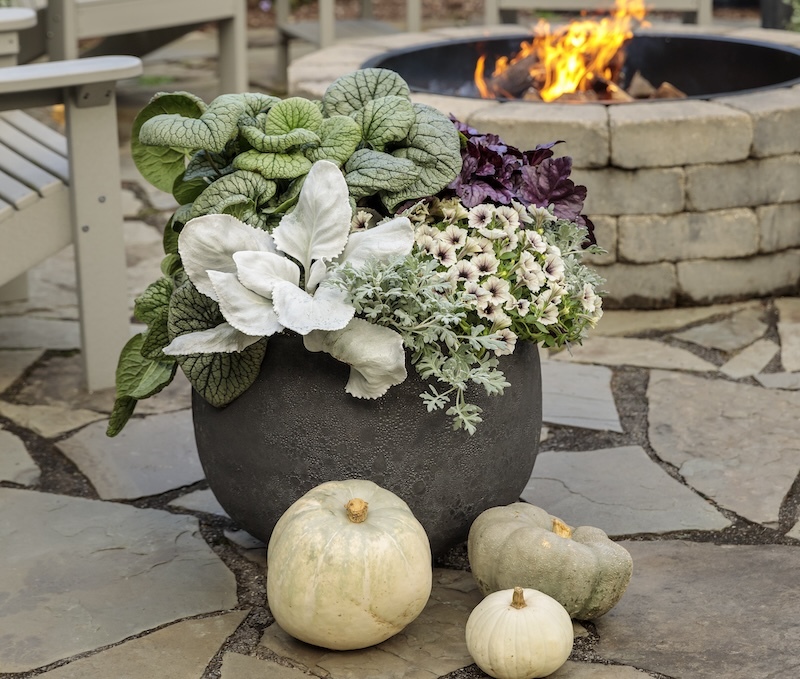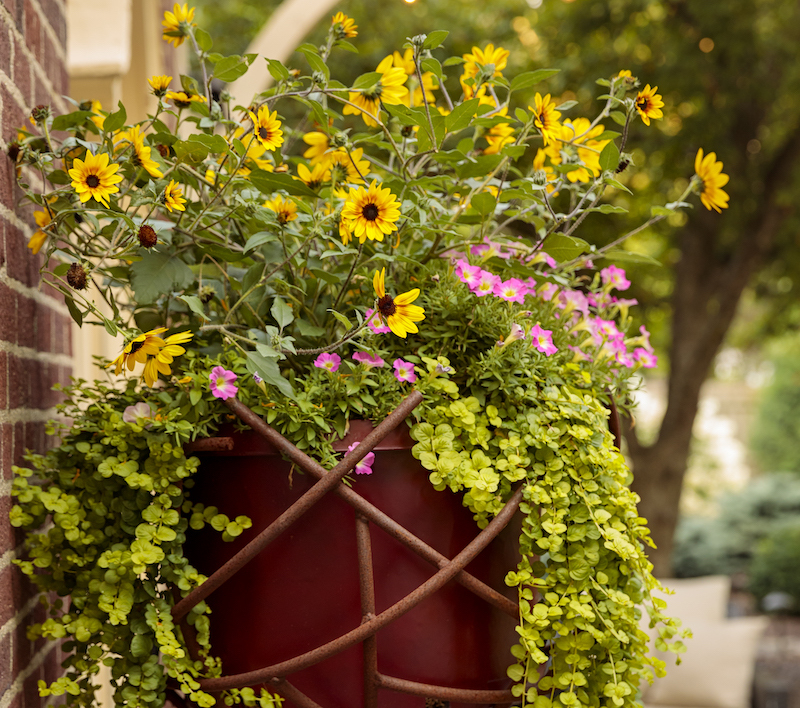Planters and other decorative containers allow gardeners to let their imagination take over. Virtually any plant can be grown in a pot. Plants that might not be cold hardy for your region can be potted and moved to a protected area to overwinter. If you live in an area with alkaline soil, you can use containers to grow those acid-loving plants such as azaleas and rhododendrons that you have always admired. Playing with color combinations in a container may inspire new plant pairings in your garden beds. Finally, container gardening is a relatively portable way to grow and enjoy your favorite plants even if you rent your home and are not able to establish permanent landscape plantings.

Best Soils for Potted Plants
Container-grown plants need a lightweight, well-draining, and moisture-retentive medium for vigorous growth throughout the seasons. Garden soil, either bagged or dug from your garden, is much too heavy for pots and tends to compact, reducing drainage and air circulation for the roots. Instead, look for an all-purpose potting mix containing perlite, vermiculite, or coconut coir. These mixes are designed to be lightweight, yet moisture retentive. Look for peat-free blends, which are more eco-friendly options. For a homemade mix, try combining a 1:1:1:1 mix of sieved compost, perlite, coconut coir, and builder's sand. Add more sand or even sharp grit to make a mix for growing succulents and cacti.
Best Food for Potted Plants
Choosing the best type of fertilizer depends on two things: the plants you are growing and how much time you have to tend to your plantings. Heavy flowering plants such as most annuals and perennials will benefit from a fertilizer aimed at supporting blooming and root development. Look for NPK ratios similar to 1-4-3. Shrubs and small trees prefer a balanced fertilizer with equal amounts of NPK to support foliage and overall plant health.
Fertilizers come in several forms, and each has its own merits. Liquid fertilizers are great for giving plants a quick boost of nutrients. These can be applied on a regular feeding schedule to support growth through the growing season. Pelletized (or granular) fertilizers typically release nutrients slowly with every watering; these only need to be applied 1 to 3 times a season. Fertilizer spikes are another slow-release food, which only need to be applied once at the beginning of the season.
Plant Combinations for Planters
The combination of plants for your container is only restricted by the size of your pot and your imagination. Two design rules can help you plan beautiful, well-balanced combinations. 1) Rule of odd numbers: Grouping plants in threes or fives will balance the composition better than planting in singles or even numbers. 2) Create a thriller, filler, spiller trio. Select a focal point (thriller), which can be a plant with a strong vertical element or even a decorative piece of yard art to draw the eye. The filler plants provide volume and complement the thriller’s texture and color, while the spillers add more color and help to soften pot edges with their trailing stems.
Try combining evergreen shrubs with ever-changing seasonal annuals to establish a year-round planter for an entryway or outdoor seating area. Combine coarse, shiny, and frilly foliage plants in various shades of green for a sophisticated planting in a shady spot like a porch. For an edible container garden, consider easy plants such as kale, runner beans, or rhubarb, and combine them with ornamental annuals that attract pollinators including sweet alyssum, pansies, and calendula. Monochrome, complementary, or analogous color schemes can be created for a relatively small cost and changed seasonally as desired.

How Many Plants
The number of plants to grow in a container depends on its overall size. Smaller planters, under a 12-inch diameter, typically can fit one perennial or three shallow-rooted annuals. To create planters with the most impact, choose the largest pot you can afford. This will allow you to mix and match virtually any annual, perennial, or even small shrub. Large shrubs and trees will require a pot that is at least half as deep as the plant’s height at maturity. That means that a Japanese Maple that grows to 4 feet tall would require a pot with at least a 24-inch diameter to balance out any top-heaviness.
Groupings of smaller pots with single plants are also an effective way to create a container display. Keep in mind that smaller pots require more watering and may need watering more than once a day during the height of summer.
Planter Tips
- Group plants in odd numbers
- Limit the number of colors for a dramatic, yet sophisticated look
- The height of the largest plant should be no more than twice the diameter of the container
- Treat your design like a composed flower arrangement. The thriller element looks great placed in the center of the composition for a 360° view, or at the back of the pot for displaying near a wall or in a corner.
- Group plants together with the same growing requirements. Grow sunny plants with other sun lovers, and shady plants with other foliage plants that easily burn.
 |
Author Robbin Small - Published 4-13-2024 |

